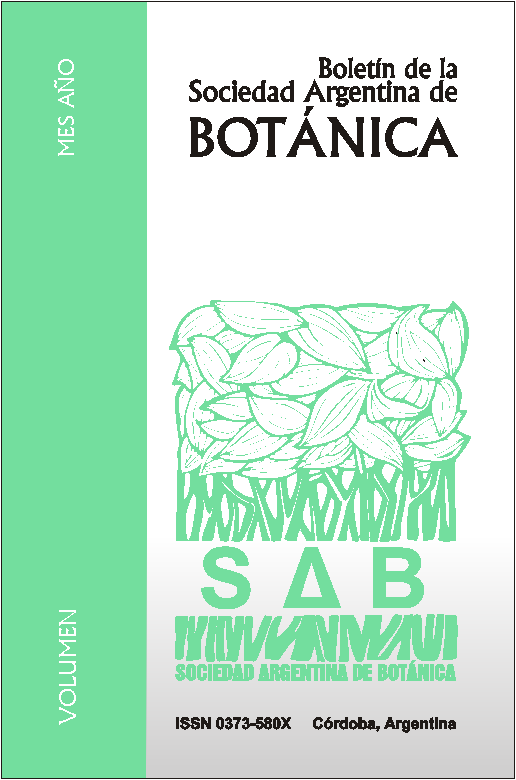Phenetic relationships among natives races of maize (Zea mays ssp. mays) from Jujuy (Argentina).
DOI:
https://doi.org/10.31055/1851.2372.v52.n4.18859Keywords:
evolution, germplasm of maize (Zea mays ssp. mays), maize landraces, maize breeding, numerical taxonomy.Abstract
Phenetic relationships among natives races of maize (Zea mays ssp. mays) from Jujuy (Argentina). The relationships of similarity existing among fifteen maize racial populations of native maize from the province of Jujuy (Argentina) were studied by univariate (ANOVA) and multivariate statistical methods (Discriminant Canonical Analysis, Cluster Analysis and Prim nets) on the basis of 22 quantitative traits (morphological, reproductive and phenological). The ANOVA detected highly significant differences among landraces for almost every variable. The first two canonical variates (cv) explain 75% of the overall variation. The discriminant traits associated to the first and second cv are related to ear and kernel dimensions (row number of kernel per ear and kernel width) and mainly to vegetative cycle length. These results along with the cluster analysis allowed the identification of racial groups, which are described. It also confirmed the existence of high variability in these races and from the minimum distance between OTUs a hypothetical evolutionary tree of these set of races was built. The results are discussed from the taxonomic and evolutionary point of view and in terms of their potential use in the selection of genetic material for maize breeding programs.Downloads
Published
Issue
Section
License
Provides immediate and free OPEN ACCESS to its content under the principle of making research freely available to the public, which fosters a greater exchange of global knowledge, allowing authors to maintain their copyright without restrictions.
Material published in Bol. Soc. Argent. Bot. is distributed under a Creative Commons Attribution-NonCommercial-ShareAlike 4.0 International license.





